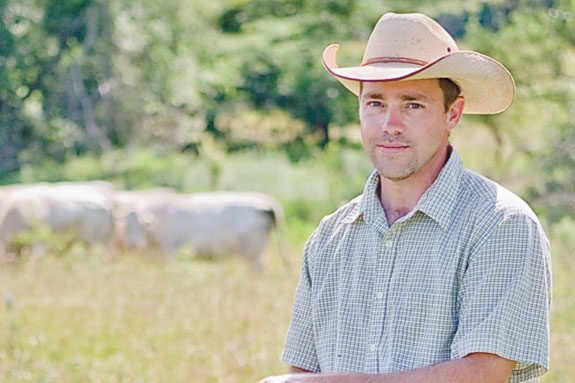Jeremia Markway, owner of Cross JM Cattle Company, has been leading his Eugene, Missouri, operation for the past five years by incorporating practical steps into his decision-making and keeping his core values close at hand.
With a business that involves custom grazing and raising stocker calves, it is important for the company to excel with its quality of forages.
“The first step I take is to make sure that the idea I want to incorporate is profitable and sustainable,” Markway says. “If it isn’t profitable and safe for the land, I’m probably not going to pursue it.”
As Markway goes on to explain, there are some practices on the operation that don’t make money, but they still incorporate them, just as there are other profitable mechanisms not used because they don’t fit into the operation’s sustainability practices.
The values set forth by the company reflect those Markway has for his own family. “I want my kids to see the value of the natural resources we have in agriculture and how they play a part in their lives now and in the future,” Markway says.
He not only wants respect for those resources; he wants to preserve the land for the future, so it will reflect the farm’s quality of life. That is sustainability for Markway.
“The wildlife is very important to us; it complements our system and is a good indicator of the overall health of it,” Markway says.
That doesn’t mean there is a big orange fence around the farm’s wilderness areas, though. The Markways engage in hunting and fishing, or just enjoying wildlife.
Since incorporating the precautionary decision-making process, Markway has witnessed many changes for the better, including the amount and quality of grass.
“Even though we sold some of our land, we were able to increase our stocking rate because of the larger amount of grass growing in the pastures,” Markway says.
One major change was the amount of time cattle spent in the paddocks grazing. Markway moves the groups of cattle from field to field, every day in most cases, and is extremely pleased with the immediate improvement.
“Our cattle are having fewer problems with pinkeye because they are being moved away from sources of manure and flies,” Markway says. “And our custom-grazing clients have been very pleased with the outcome of their cattle on this system.”
The dropping refusal rate is another reason Markway is glad to have made the improvements to rotation time. Since cattle are eating fresh grass more often, their intake levels are higher and there is less refusal on old, trampled forage.
The real attribute, Markway says, is the cattle themselves, who are used as tools for their own forage. “They do a lot of the work, in terms of residue and nutrient management in the paddocks.”
Every time the cattle are moved, they fertilize the new area. Nutrients soak back into the soil to be used again in all the grazing areas, instead of in one confined area.
The cattle also speed up recycling and soil-building by knocking down the residue to enrich the soil all over again. “To me, if you can influence the way cattle are having a positive effect on the residue by getting it knocked down on the ground, that is more important than the manure they are putting out there,” Markway says.
Not only have the improvements been great for grazing, but they are helping the farm’s stockpile too. Last winter, Markway was able to rely on his stockpile for most of the feeding, in addition to some feed additives the stock calves need.
The other key to the quality of forage is the recovery time for paddocks. “No certain specific time is going to fit all people in all situations,” he explains. “If you graze an area, and come back and re-graze the same area before it has had ample time to replenish its roots, you are going to have a negative impact on the grass.”
So Markway uses the inverse; he grazes an area, then allows it to replenish before he grazes cattle on it again, influencing the amount and diversity of the forage that grows back.
“It is all about paying attention to how different components work together,” Markway says. “It is also about being observant and thinking about decisions before you make them.”
Before Markway put his plans into action, he attended several different grazing clinics and seminars that helped him get different ideas from different operations. He sees that as a good start for those wanting to do the same. “Listening to what others have to say and compiling those ideas to fit your own needs, that is what makes up a good management system.” FG










